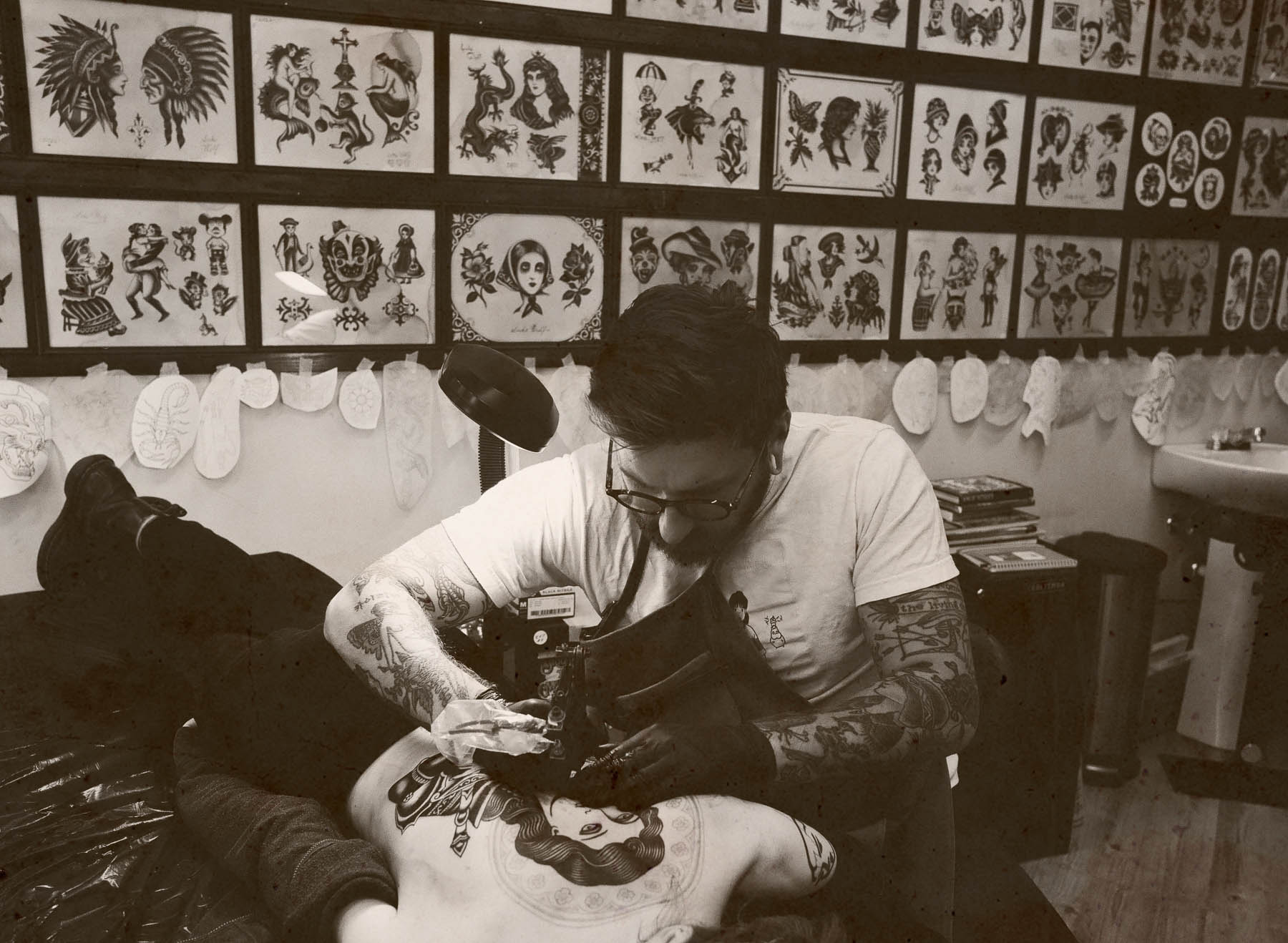There are things that instantly come to mind when you think of Indiana; the Indy 500, the Colts, basketball, corn. From the eyes of the rest of the country we are nothing but a flyover state, a place people gather on porches to enjoy a nice storm. It’s a deserved reputation, sure, but one that is changing thanks to an emerging art scene in Indianapolis. Music here has never been so vibrant. Artists are gaining national renown and the support for creatives is at an all time high. And nestled in this boom of unique, artistic talent here is a strong, growing tattoo community. And within that community is the art of Traditional Style.
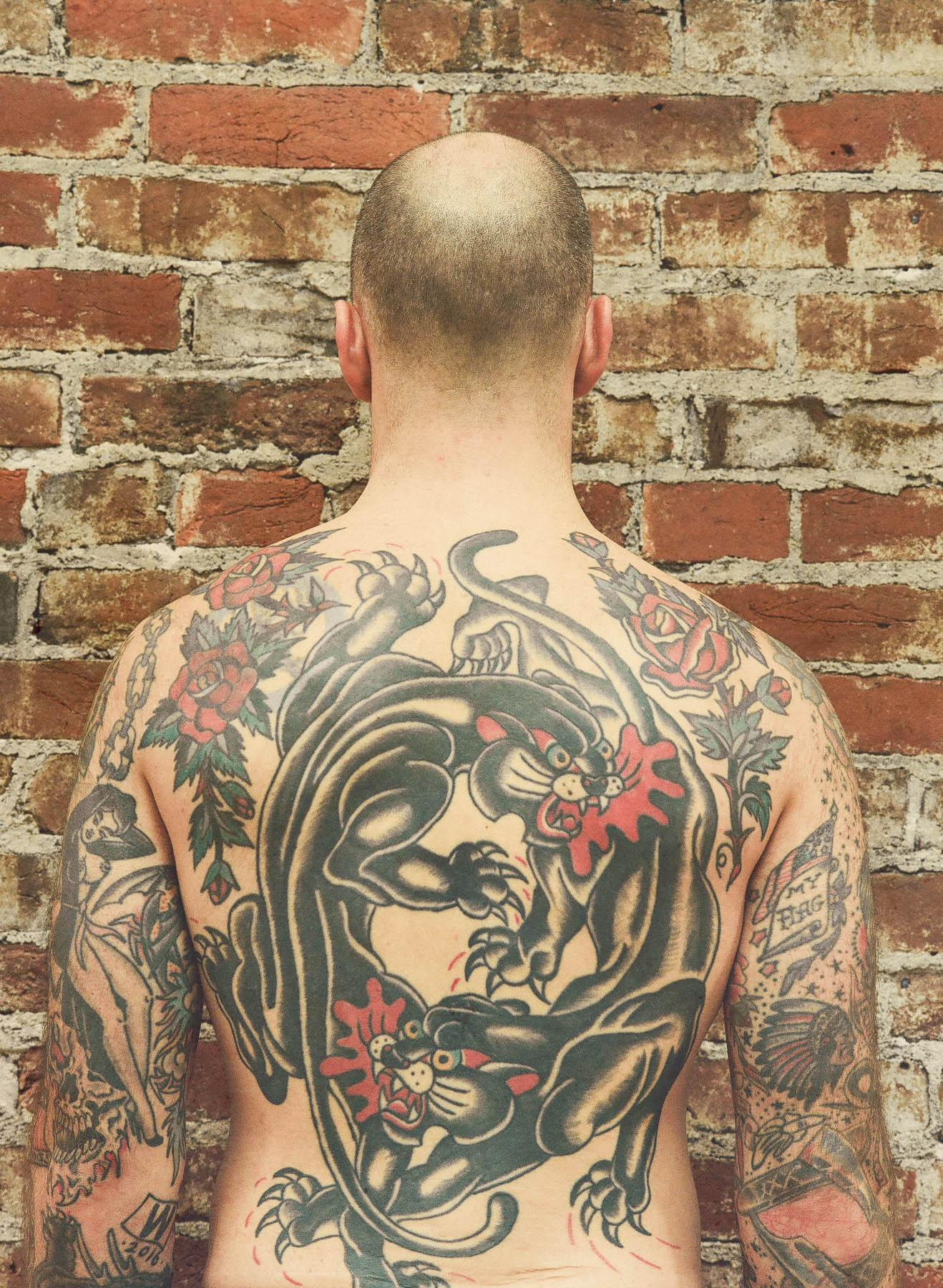
What is Traditional Tattooing? I’ll let the professionals tell you. Aldo Rodriguez and Eric Caudill work out of Monument Tattoo where they bang out some of the best traditional tattoos in the city. Not far from Monument are Taylor Morris and Luke Wolf Jr., tattooers who work out of a private studio making traditional tattoos with their own cultivated aesthetic. These four have almost forty years of tattooing experience between them and are keeping the tradition alive.
I got to kick it with these artists and learn more about their chosen art form. Where these designs come from, what it is that people love about them and how Indy stacks up against other major cities in terms of tattoo prowess. Who knows? Maybe one of them might just be doing your next tattoo.
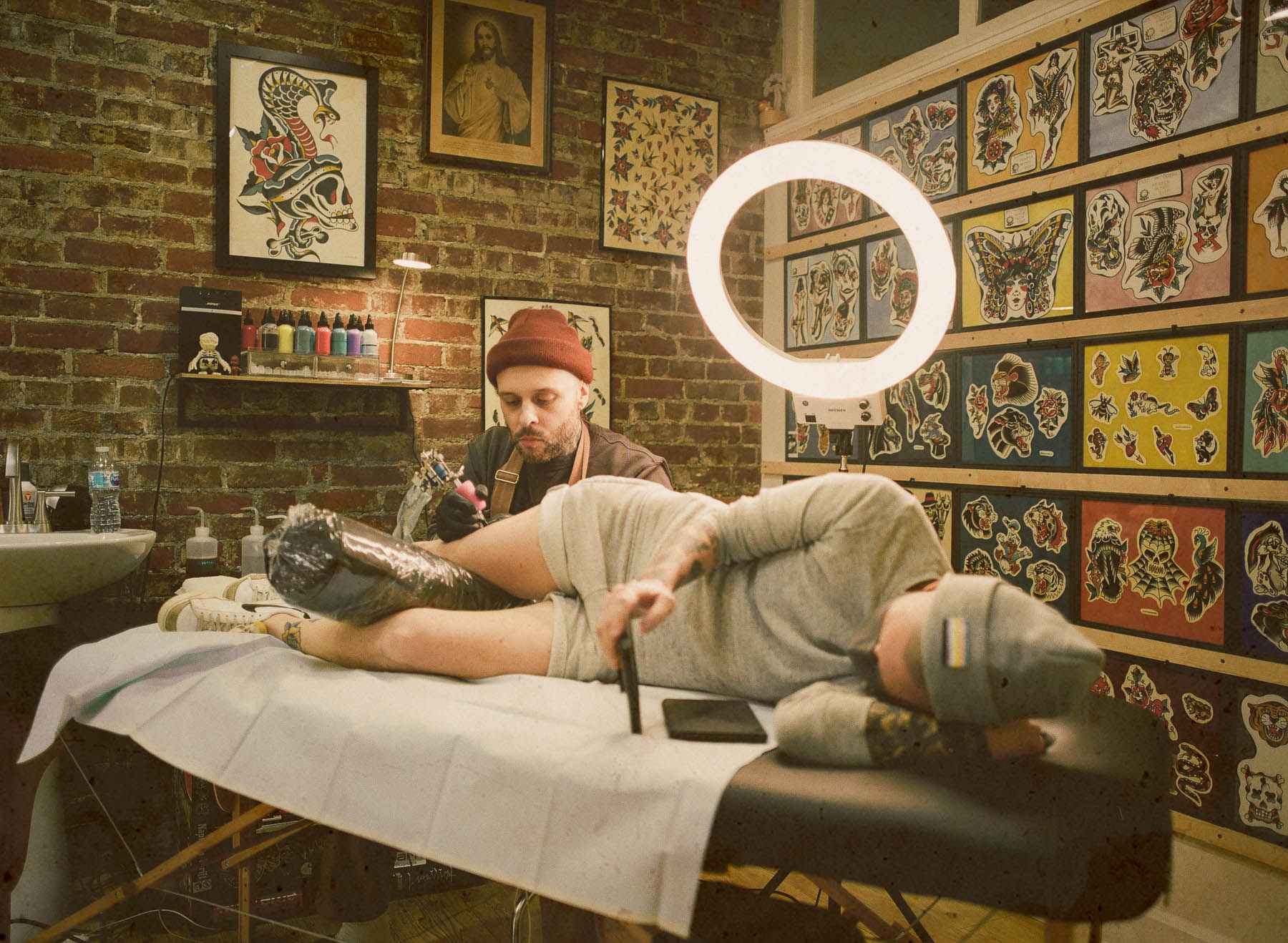
Jacob Moran: This may be a difficult question to answer but to the people out there who don’t know what traditional tattooing is, how would you define it to them?
Luke Wolf: It’s hard to paraphrase what it is. I’m not sure anyone really knows where the term comes from. There are so many types of traditional styles. I personally pull from turn of the century references. Even within traditional tattooing, there are different styles. It isn’t easy to articulate because there are so many interpretations of it. The application is probably what is universal when it comes to traditional tattooing. Clear designs. When you see it, you know exactly what it is.
Taylor Morris: A lot of traditional tattoos have repetitive imagery like snakes, skulls, daggers, hearts and eagles. Designs that are timeless. Traditional tattoos are tattoos that are easily identifiable. Bold outlines and readable designs. Not always the case but a lot of the time. That’s the easiest way to sum up what Traditional is.
Aldo Rodriguez: And it doesn’t always have to be really bold. The design, the imagery and how it’s executed I think is what traditional tattooers share.
Taylor Morris. Right. You could technically do a tattoo of Spongebob in a traditional style, it’s not just those iconic designs that everyone recognizes.
Eric Caudill: I agree. Aldo and I do the same type of imagery and they’re both traditionally styled. There are so many subgenres and interpretations of the style and that is part of what makes it so appealing.
JM: Daggers, skulls, hearts, eagles and roses. We see these designs inked on people all around the world. Do we have any knowledge of where these designs come from?
TM: A lot of the traditional designs stem from western tattooing from around 1880 and on. The origins aren’t exactly clear. The subject matter of that time when it came to tattooing were those designs you mentioned.
LW: I don’t think anyone really can pinpoint exactly who originated the designs. But we’re just trying to keep those designs alive and replicate those tattoos. We’re just trying to replicate those tattoos, we aren’t trying to revolutionize tattooing.
AR: Sailors prior to WW1 were bringing these designs to and from America, but no one really knows the origins.
TM: It is like trying to figure out who was the first rock band.
EA: Well it was the Beatles. We all know it was the Beatles!
LW: Yup, it was the Beatles.
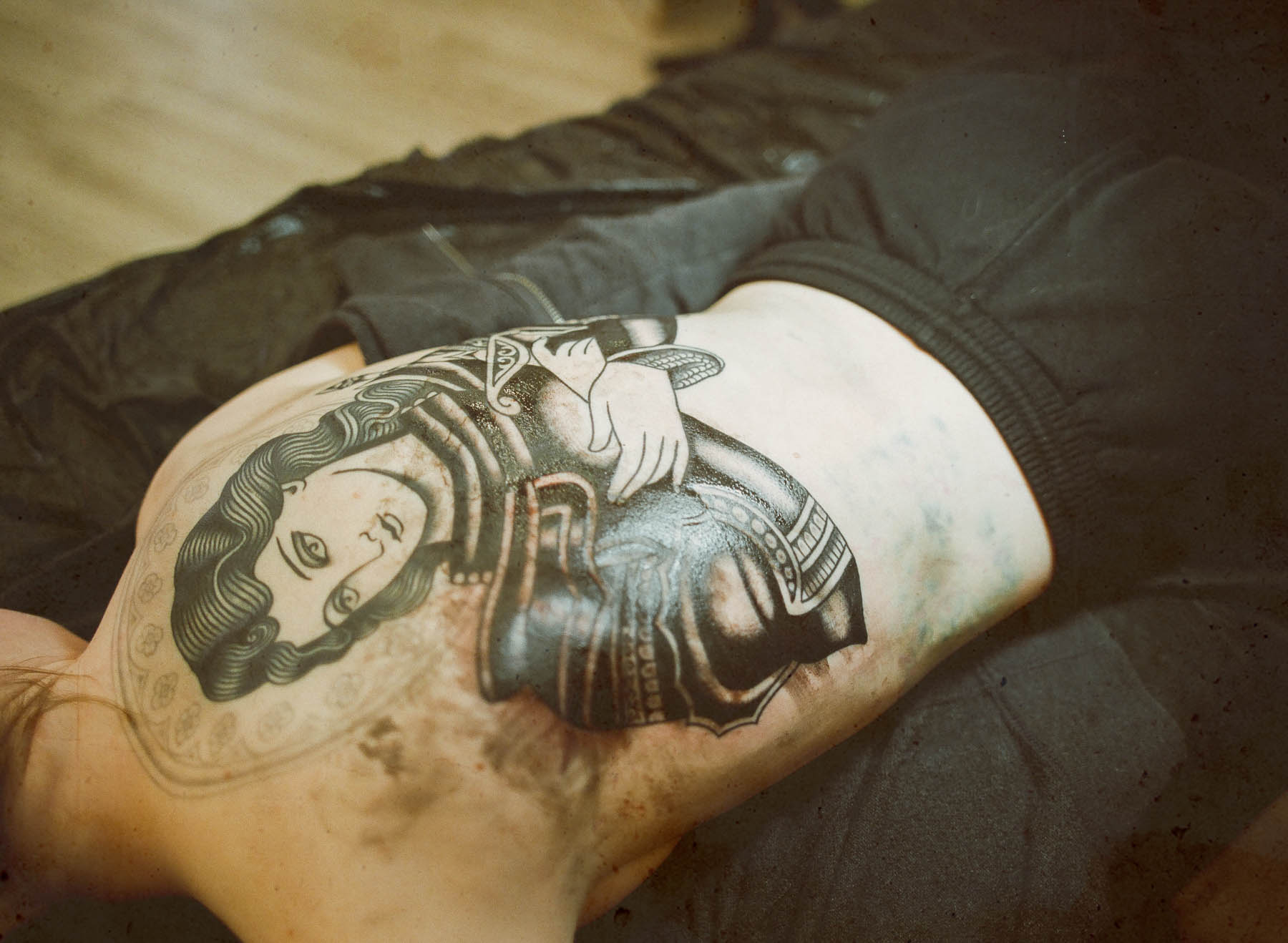
JM: I want to know where the hotspots for traditional tattooing are here in america. Where are those places in your guys’ opinion?
TM: New York, but honestly Austin, Texas is pretty big.
LW: Yeah I was about to say Texas.
TM: Some people may be surprised to hear Texas but when you think about it, it is sort of in their DNA to be Americana, and that sort of goes hand-in-hand with a lot of traditional subject matter.
AR: I have found any community that has a strong art community, specifically music, will almost always have an equally as strong tattoo community. Tattooing and music have always had a strong connection in my opinion. Honestly, Indianapolis is becoming one of those cities.
JM: Can you expand upon that?
AR: The prominence of great tattoos in the city has been going up recently. It can be hard to see but it’s happening. There are so many tattooers here in the city that are great and doing really well. Not even just in terms of traditional, but all styles. We’re on our way to becoming one of those tattoo hubs of america.
EA: It’s definitely happening. People come from all over to get tattooed by any of us, it isn’t just Indianapolis. People are starting to realize it is worth it to travel to get tattooed by a specific artist because your time is limited, and your space on your body is limited.
LW: Yeah, and I could die any day. I am very exclusive. I try to flaunt that as much as possible. I won’t be around forever so come get inked.
AR: Nice.
TM: Cool.
*Laughter
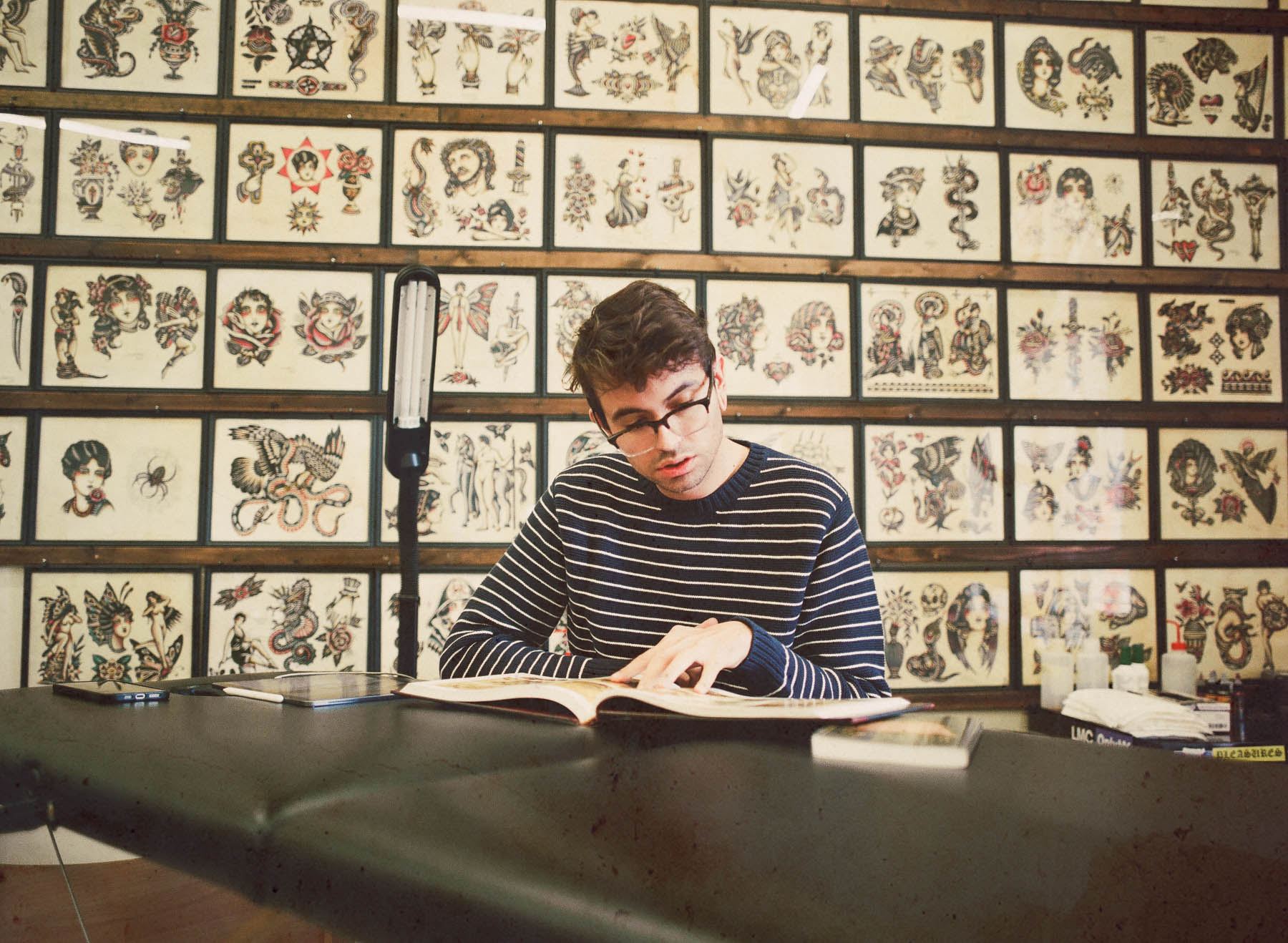
JM: Tattoos are such an interesting form of art. It’s so accessible because people are wearing them everyday. You can run into a tattoo on someone that impacts you just by walking on the street. It isn’t like you have to go to a gallery or show to experience it. They are everywhere. Since you all have rooted here in Indy, have you seen an uptick in acknowledgement and appreciation for your style of tattooing in the city?
Everyone: Yes.
AR: Taylor and I worked at a street shop years ago just peddling the shit. There were weeks where we wouldn’t do a single traditional design because that wasn’t really the demographic. It hasn’t been easy to convince people that these designs aren’t stupid cartoons ya know? So to make people take this style seriously in a city that didn’t already have a strong understanding of it was an uphill battle.
LW: There has definitely been a change here in our city in terms of traditional appreciation and pride. More and more people are wanting traditional tattoos which in turn creates more traditional tattooers. To be able to work in a city like Indianapolis and preserve this style is so cool.
EA: And it’s so cool to see our clients learn about the style the more that they get. They’re educating themselves on history and it’s so sick to see the love for this style grow from person to person. They’re recognizing it as a legitimate tattoo form.
LW: Absolutely. All our job is to give them tattoos. So to watch our clients get these designs and form their own passion for traditional tattoos creates this domino effect. It’s really awesome to see.
TM: We don’t do walk-ins, so people have to sort of go out of their way to get tattooed by us. I had two appointments that came in and just picked something off the flash. As I was tattooing them they asked about the style and what it was called. They had no knowledge of it but were drawn to it and went out of their way to get it, and that type of experience is really cool.
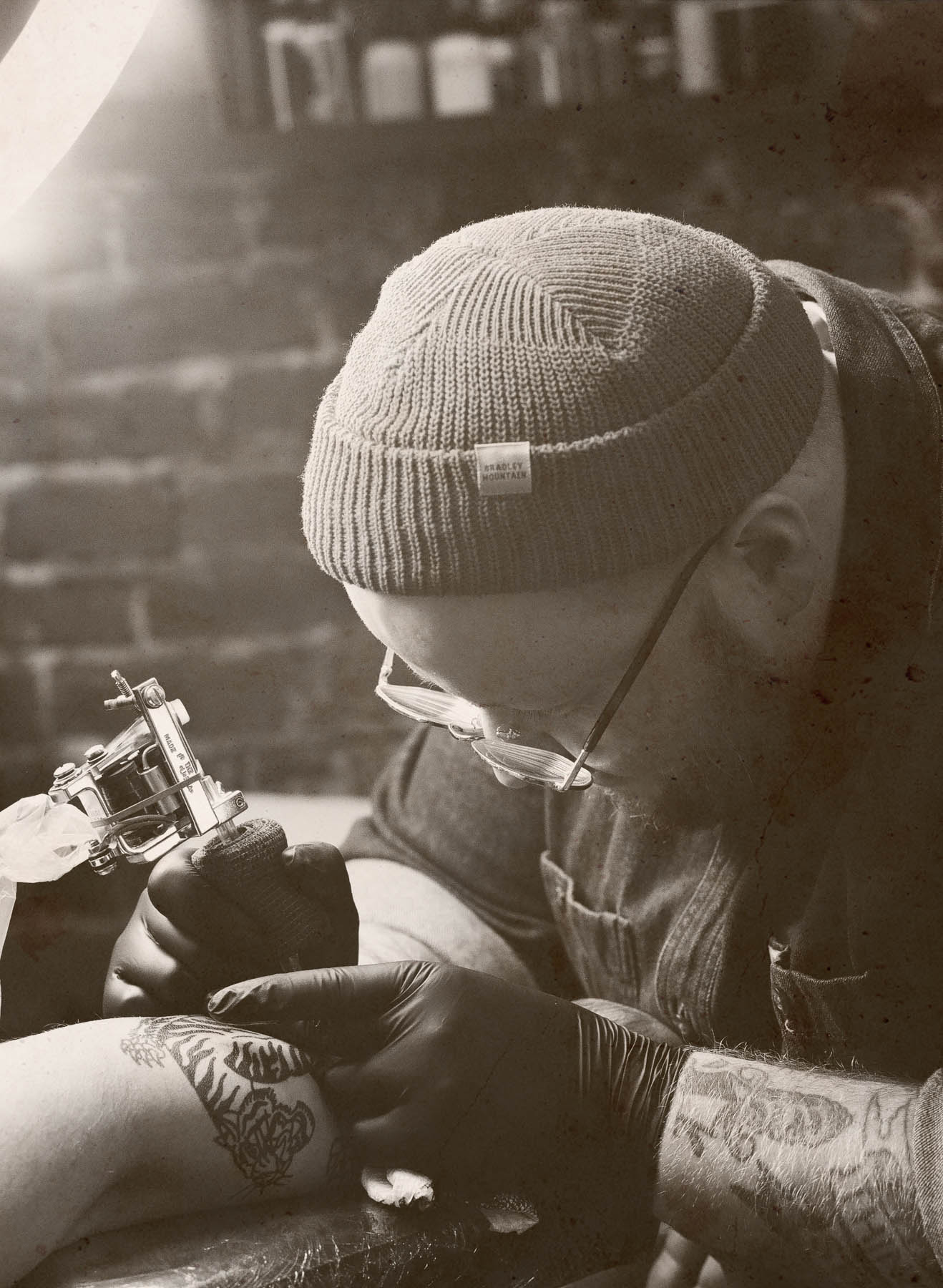
JM: Yeah, I’ve personally seen a huge surge in appreciation for the style. I think speaking from experience, finding traditional tattooing is so freeing. I think a lot of people think that your tattoos have to have this huge sentimental value to them. Traditional tattoos for me have allowed me to have fun with my tattoos and get whatever I like and appreciate the art for what it is.
LW: The cool thing about traditional is that you can make it mean whatever the fuck you want.
AR: Exactly.
LW: Obviously there are some images that will very much convey a defined meaning. But for instance if you get a butterfly it can mean whatever you want it to mean to you. You can load it with tons of meaning if you want, you just get to pick your own.
JM: Oh yeah, the ability to place your own meaning to something is so vital to any art form. Tattoos are especially interesting because it’s an art form that some people see and immediately ask you what it means to you. Which can be a tricky thing to convey.
AR: I think that’s because with these designs being so easy to read, people want to know why it’s there. If the design is abstract and takes someone a while to figure it out then it obviously has some sort of meaning to it. So if someone sees that you have a snake on your arm, it’s easy for them to digest but broad enough to peak their interest as to why it’s there.
EA: Sometimes the answer to ‘Why did you get that skull?’ is simply ‘Because it’s a sick ass skull!’
LW: Exactly. It can mean whatever you want it to.
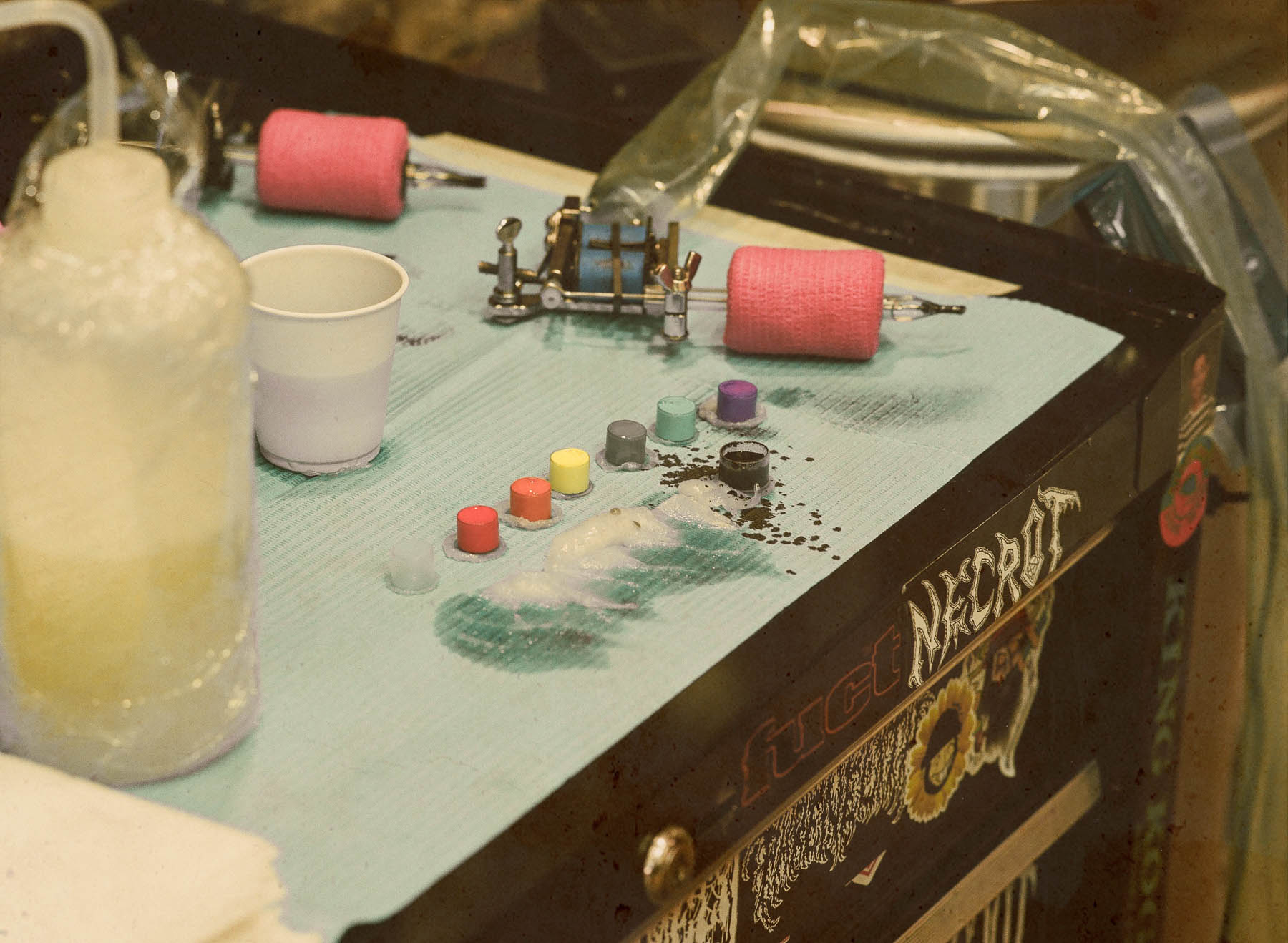
JM: There are obviously bigger markets out there in terms of the tattoo industry. What is keeping you all here in Indianapolis?
TM: I love Indianapolis. I was born and raised here. I think the short answer is that it is cheap to live here but in all honesty I love the city. All four of us are passionate about contributing to the preservation of traditional tattooing and growing it here in the city.
LW: I feel that. I would rather be here as opposed to a city that is really saturated with a ton of tattooers. Seeing the love for these designs grow in the past ten years is really cool.
AR: The cold fucking sucks. But I love Indianapolis and love that I have gotten to see its appreciation for traditional tattoos grow.
EA: And the city is still growing. We’re not going to nurse our baby then leave it out in the cold. The city is starting to recognize the style more and more. We’re trying to build that reputation here in the city and we’re really proud of that.
